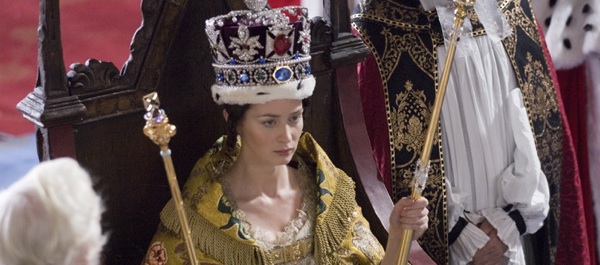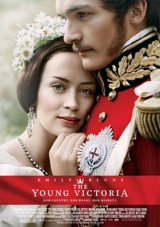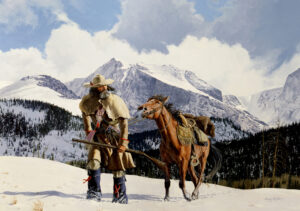 Question: What does Martin Scorsese, the director of films like Goodfellas, Raging Bull and Taxi Driver, have in common with Sarah Ferguson, Duchess of York?
Question: What does Martin Scorsese, the director of films like Goodfellas, Raging Bull and Taxi Driver, have in common with Sarah Ferguson, Duchess of York?
Answer: Queen Victoria.
Both members of this unlikely pair are listed as producers on The Young Victoria, a movie about the early years of Britain’s renowned monarch, which is making a limited American debut December 18 before expanding to wider distribution on Christmas Day. The timing is appropriate: Victoria and her husband, Germany’s Prince Albert, popularized the decorated Christmas tree as we know it.
As its title suggests, the movie focuses on the early years of Queen Victoria’s reign and her arranged marriage that blossomed into one of history’s great love stories. Placed upon the throne when she was 18, following a rather secluded childhood, she became, with Albert’s assistance, a powerful and influential ruler, although the monarchy no longer controlled Britain’s policy decisions.
Sarah Ferguson, Duchess of York, has long been fascinated by the story of Victoria and the long-reigning queen’s “sense of cheekiness … her sense of humor. I find she’s so strong and bold.”
The Duchess had been trying to interest the film industry in this project for over 10 years before she mentioned it to Graham King, president and CEO of GK Films, the company that brought it to the big screen.
Written by Academy Award–winner Julian Fellowes (Gosford Park, Vanity Fair) and directed by Jean-Marc Vallée (C.R.A.Z.Y.), The Young Victoria stars Emily Blunt (The Devil Wears Prada) and Rupert Friend (Pride & Prejudice) as Victoria and Albert.
Although there are a few historically inaccurate concessions made within the story, overall it is reported to be accurate in its depiction of people and events.
“The first challenges,” Sarah Ferguson said, “were to ask everyone to keep to history and … the real story of the untold story of love. It’s so good it doesn’t need to be sort of hyped up.” In short, to make it something the royal family would not be ashamed to have their names associated with.
The Duchess’ daughter Princess Beatrice even has a part in the film.
“I think Beatrice would like to be in that century, and I keep trying to tell her, well, it’s not going to happen, dear.”
 To assist Emily Blunt in depicting Victoria, the actress was given access to the young queen’s private letters and diaries, in which Victoria often went into great detail concerning her feelings, good and bad, about the people around her. For Blunt, bringing the character to life was a balancing act.
To assist Emily Blunt in depicting Victoria, the actress was given access to the young queen’s private letters and diaries, in which Victoria often went into great detail concerning her feelings, good and bad, about the people around her. For Blunt, bringing the character to life was a balancing act.
“There was an element of me sort of saying … prove to me that she wouldn’t have sat like this or said that, said something in that tone of voice, but I think I wanted at the same time to do her justice” in the areas of her life that are well documented.
Rupert Friend, the film’s Prince Albert, recognizes that historians may be well versed in the history of events in the movie, “but for everyone else it’s realizing that these are two teenagers that had to negotiate this incredible political responsibility and still manage to fall in love.”
To portray the German-born Albert, who had an accent and did not want one, Friend had to train himself to speak with a German accent, then learn an English accent from the German one.
Blunt and Friend said they were inspired by the efforts the historical Victoria and Albert made to bring about social reform and develop arts and sciences.
Then there is Martin Scorsese, the tough guy’s tough guy of film directing. A love story about a young queen is far removed from the sort of film for which he is best known.
For him, this is “a film that is really about the acquisition of power, the young life of a woman who took the throne at the age of 18, and who eventually became not just the Queen of England but a ruler who left such an indelible mark on her own time that an entire era was named for her.”
To Scorsese, whose movies often have a historical basis—Gangs of New York, even Goodfellas and Raging Bull—making history come alive is a matter of details, “the texture of the weave in a fabric, the temperature of a room, the light, the writing instruments, the kitchen, the cuisine.”
A great love story set amidst the intrigues of court, The Young Victoria inherently has all the drama a good film needs. Perhaps it will inspire audiences to learn more about one of the most remarkable women of her era and about one of the most fascinating couples in all of history.




